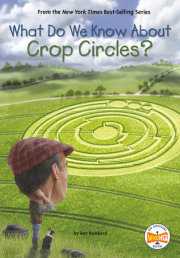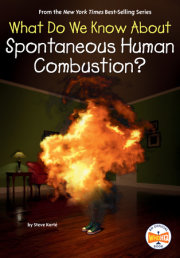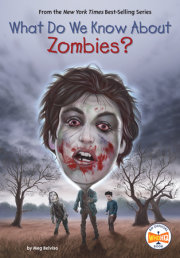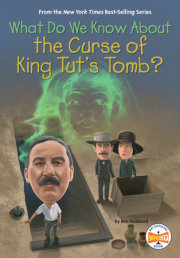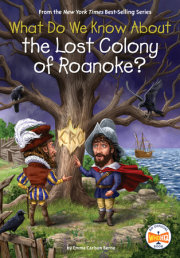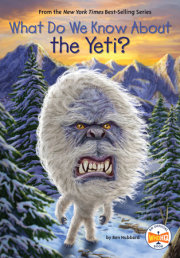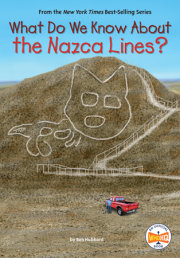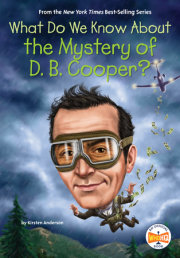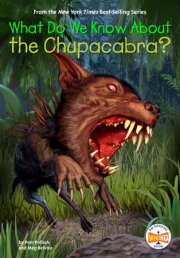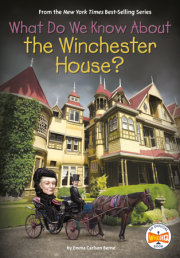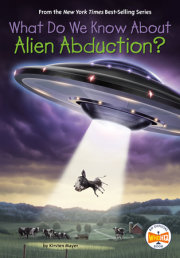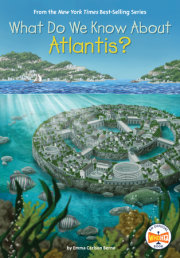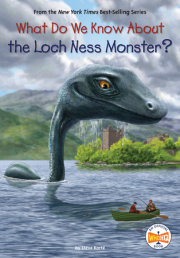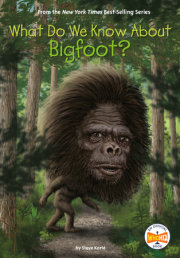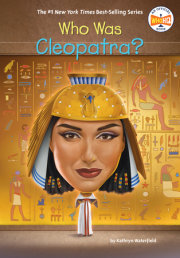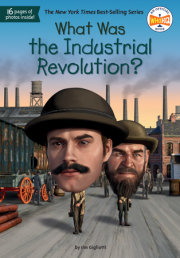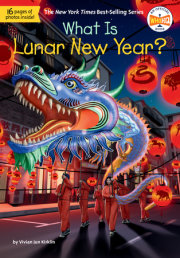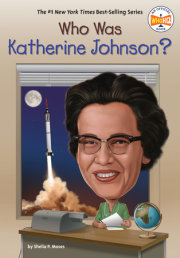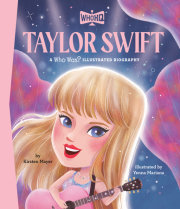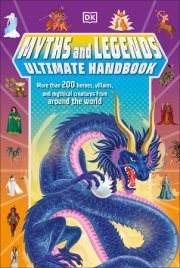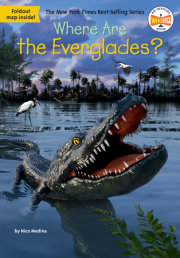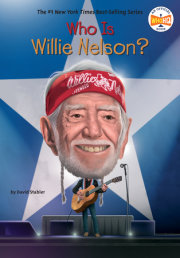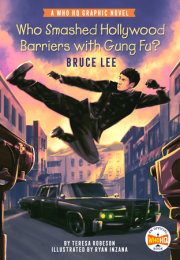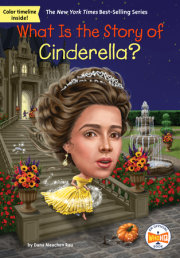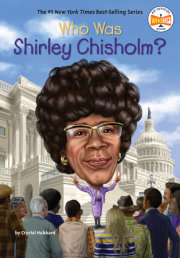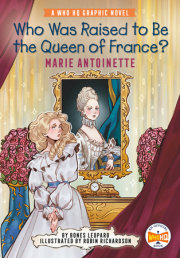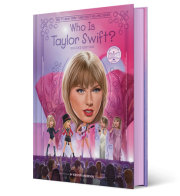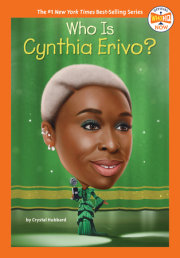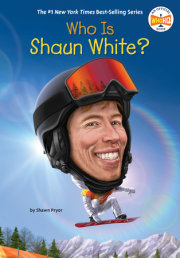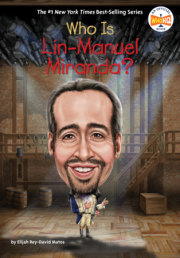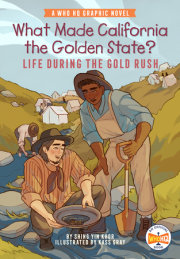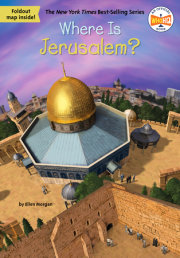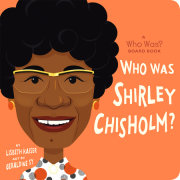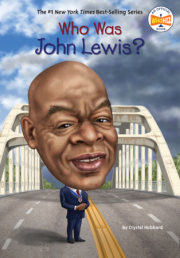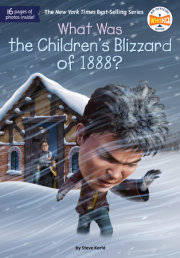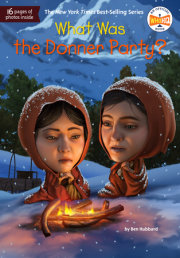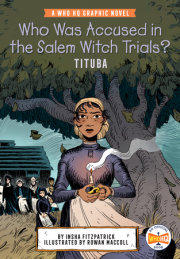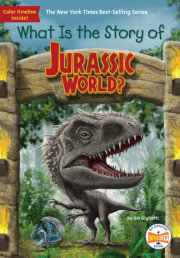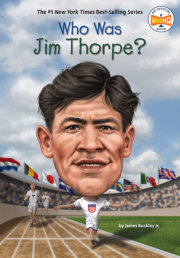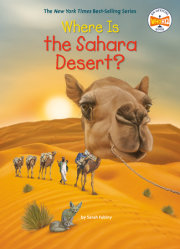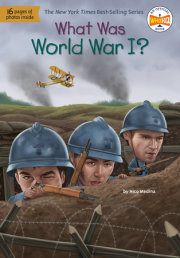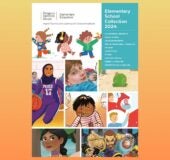What Do We Know About Crop Circles? In 1966, something strange happened on a farm by the town of Tully, near the northeast coast of Australia. At 5:30 a.m., the farmer’s dog began barking and then bounded away toward a nearby lagoon (a small lake). Farmer George Pedley drove his tractor to the lagoon later that morning and heard a loud hissing noise. He thought it might be a punctured tire, but suddenly, a large object rose from the lagoon before him. It was gray, the size of a bus, and shaped like a saucer. It spun rapidly as it rose. Then, the object tilted slightly and sped into the sky, faster than a jet plane. The hissing noise disappeared with the object, but a strong smell of sulfur remained.
Pedley ran closer to the lagoon to take a look. Normally there were high, standing reeds—-tall grasses—-covering the water’s surface. But now, there was a saucer--shaped circle in a spiral pattern on the surface, formed by flattened reeds. The circle measured thirty feet across.
The “Tully Saucer Nest” made headlines across Australia. Investigating police and scientists said the circle had probably been made by a whirlwind, a column of air moving in a funnel shape. But Pedley disagreed. “I’ve seen wet whirlwinds and dust whirlwinds. If the police believe this, let them. I know what I saw. It wasn’t a whirlwind.”
The next day, two more circles appeared on another Tully lagoon. Only a few feet across, the circles were also filled with flattened reeds. Soon, circles were being discovered across south Australia in wheat and barley fields. Some fields had up to twenty circles of different sizes. There were also reports of bright lights and Unidentified Flying Objects (UFOs) around the circles. But scientists could not find any evidence of UFOs.
Of course, it was possible that someone had made the circles during the night—-perhaps as a hoax, or trick—-but the scientists did not think humans were involved. So who, or what, was creating the circles? Although they would not be called by this name until 1983, the mystery of modern crop circles was born.
Chapter 1: Early Circles People have reported seeing crop circles for hundreds of years. A short booklet from 1678 describes a circle in a field of oats in Hertfordshire, England. Oats, like wheat and barley, are crops that farmers grow and cut down at harvest time in late summer. But in 1678, the farmer could not find someone to cut the oats. He needed a “mower” to harvest them. Although he was rich, the farmer was also miserly. He did not want to pay the wages the mower had asked for. He told the mower that “the devil himself should mow his oats before he should have anything to do with them.”
That night, the field of oats appeared to be on fire. The next day, the farmer found that the oats
had been cut down in a round, swirling circle. No -one could have done so much work in one night, and it frightened the farmer. He explained the circle as the work of a “Mowing Devil” and
was too afraid to remove his crops. The Mowing Devil is illustrated with a creepy figure cutting the crops.
It is not the only example of such strange circles in England at this time. Circles of flattened grass, called fairy rings, were also reported. In the Middle Ages, fairies were believed to be creatures with magical powers. Some were thought to look like tiny, winged women and live in the woods and cause mischief. Fairies dancing together in circles were believed to be responsible for the fairy rings of flattened grass.
In 1686, Oxford University professor Robert Plot was asked to investigate the fairy rings. Some of them were up to 150 feet across! Plot said the circles may have been caused by male deer rutting (locking horns) or by moles during mating season. He also thought a whirlwind or a lightning storm may have made the circles. Plot interviewed people who said they saw “hollow tubes of lightning” and “bright balls of light” around the circles. Plot did not solve the mystery.
Crop circles, balls of light, and objects from the sky had also been mentioned in North American legends by the Algonquian people, who were among the first to settle in parts of Canada and the United States. The Algonquian were made up of separate nations, such as the Cree, Cheyenne, and Odawa, who all shared the Algonquian language.
According to an Algonquian legend, a hunter named Algon found a perfect circle of flattened grass in a prairie one day. But there were no footsteps leading to the circle. While Algon wondered how the circle was formed, a basket full of women descended from the sky and landed in the circle. In the middle of the circle was a shining ball that the women danced around. They used sticks to strike at it.
Legends like this one and English folklore provided explanations for crop circles at a time when people didn’t have scientific explanations for much of the world around them. Eventually, science was able to provide rational reasons for many things. Crop circles, however, continued to confuse people. Even as reports of new crop circles kept emerging.
In Guildford, England, in 1880, scientist John Rand Capron was out walking after a storm and found a circle of flattened wheat. The wheat stalks were bent over at the base and formed a spiral pattern. What surprised Capron most was the neat outer edge of the circle. What had made it?
Capron wrote about the circle in a scientific journal called Nature. Because it had been found after a storm, he thought a whirlwind might have caused it. Nearly one hundred years later, many new theories about crop circles and whirlwinds were being discussed. And some of them were out of this world.
Chapter 2: Modern Examples During the 1960s, reports of crop circles became more frequent, and not just in Australia. They were also appearing in the United States. Some reports included eyewitness accounts of Unidentified Flying Objects hovering near the crop circles. This led many to believe crop circles were the work of extraterrestrials, beings from another planet.
In Marion County, Oregon, in 1964, ten--year--old farmer’s son Michael Bizon said he saw a shiny UFO land in a wheat field. The UFO smelled like gas, made a “beep--beep” noise, and “took off like a rocket.” Bizon’s father found one large circle of flattened wheat with three smaller circles around it. The local sheriff said the place “where all the wheat was flattened did indeed look suspicious.”
The US Air Force investigated. A lieutenant questioned Michael Bizon several times. He reported: “Everyone’s story remains the same. The boy’s father and mother, the Marion County Sheriff, the carpenter working there . . . they all back the boy up.” The cause of the circles, however, was left unsolved.
Other crop circles were reported on American farmland in Montana, Michigan, and Indiana. Eyewitnesses reported strange balls of light rising from the ground and in some cases burning their skin. After flying away, the balls left behind circular patterns in the fields. Investigating scientists said the lights may have been caused by burning paper, marsh gas, or balls of lightning.
But some scientists said the crop circles could be hoaxes—-circles made by people to trick others into believing they were left by something mysterious, such as aliens. This hoax theory would become a major part of the modern crop circle story.
The mystery continued when twenty--seven new circles were found in a wheat field in Veblen, South Dakota, in 1965. The local newspaper asked for an expert to explain the circles, as the current theories “ranged from whirlwinds to whirlpools to interplanetary visitors.” The air force concluded that whirlwinds had caused the circles. However, a local expert found there was “no logical explanation” for the circles.
Around the same time, crop circles were also being reported in Canada. Some of these circles were very big. They measured over thirty--two feet across. As with the United States examples, UFOs and balls of light were seen near the crop circles. Other crop circles were reported in Argentina, Brazil, France, Australia, and the Netherlands. However, the largest number came from the country where they were first reported so long ago: England. Here a crop circle appeared in 1966 that made headlines both in England and abroad.
For years, there had been strange sights in the small market town of Warminster, Wiltshire. These included bright lights and fireballs in the sky. Others reported seeing a gray, cigar--shaped UFO with portholes along its side, like a ship. Then, in 1966, crop circles began appearing. A local newspaper reporter named Arthur Shuttlewood was sent to investigate. He wasn’t sure what to call the crop circles and UFO sightings. So he wrote an article describing them as “the Warminster Thing.”
Shuttlewood felt certain that alien spaceships were making the crop circles. Some of the circles were in grassy fields, but Shuttlewood also discovered a circle of flattened reeds on a small lake. The reeds spiraled in a clockwise direction and were almost identical to the “saucer nests” found in Tully, Australia. Amazingly, they were also found only a few days after the Tully nests.
Then, in 1972, Arthur Shuttlewood claimed to have seen a crop circle actually forming right in front of him in a wheat field. “The grain flattened like a lady’s fan being opened up. A perfect circle resulted in less than a minute,” he wrote. But he had seen nothing that was causing the motion. Shuttlewood kept discovering crop circles throughout the early 1970s, and he even wrote several books about them. If something unexplained happened in Wiltshire, reporters would call Shuttlewood. However, today it is thought Shuttlewood exaggerated many of his stories. When he stopped reporting on UFOs and crop circles, they stopped appearing. By the mid--1970s, the UFO and crop circle craze had died down in Wiltshire. This, however, would not last.
Copyright © 2022 by Penguin Random House LLC.. All rights reserved. No part of this excerpt may be reproduced or reprinted without permission in writing from the publisher.



